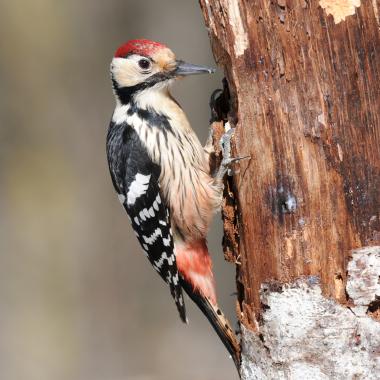Feathered treasures
Our birds
Since the creation of Kalkalpen National Park , 115 bird species have been documented, of which three species - the rock partridge (Alectoris graeca), the black vulture (Aegypius monachus) and the Ural owl (Strix uralensis) - have only been confirmed from earlier records (Brittinger 1866 and Hinterberger 1854) and six other species (water birds) are breeding birds in the valleys. Of the 103 species at the montane and subalpine levels, 79 breed (60 with breeding records). A further seven species may breed, four species are breeding birds in the surrounding area and 16 are guests or passage migrants. No breeding evidence of the skylark (Alauda arvensis) could be found. The house martin (Delichon urbica), which still bred on the Ebenforstalm in the 1980s, is also no longer likely to occur as a breeding bird in the Reichraminger Hintergebirge. 39 of the 103 species are considered endangered in Upper Austria, five species are even considered critically endangered. A few years ago, the peregrine falcon(Falco peregrinus) was classified as "threatened with extinction". At least 24 of the 115 recorded species appear in Annex I of the European Union's Birds Directive.


White-backed woodpecker
Rarest woodpecker species in the Eastern Alps
The white-backed woodpecker is the rarest woodpecker species in the Eastern Alps and is considered the most important bird species in the Kalkalpen National Park. Due to its strict dependence on heavy deciduous deadwood, its occurrence is limited to very natural deciduous and mixed forests dominated by deciduous trees. It is a pronounced indicator species for primeval forests. Other characteristic species of Kalkalpen National Park are the pygmy flycatcher, grey-headed woodpecker, great horned owl and pygmy owl as well as the collared flycatcher, honey buzzard and capercaillie.

Golden eagle
our largest breeding bird of prey
The golden eagle is the largest breeding bird of prey in the Northern Limestone Alps. The national park is home to three territories (breeding pairs). In recent years, small groups of young birds have been observed flying in.





